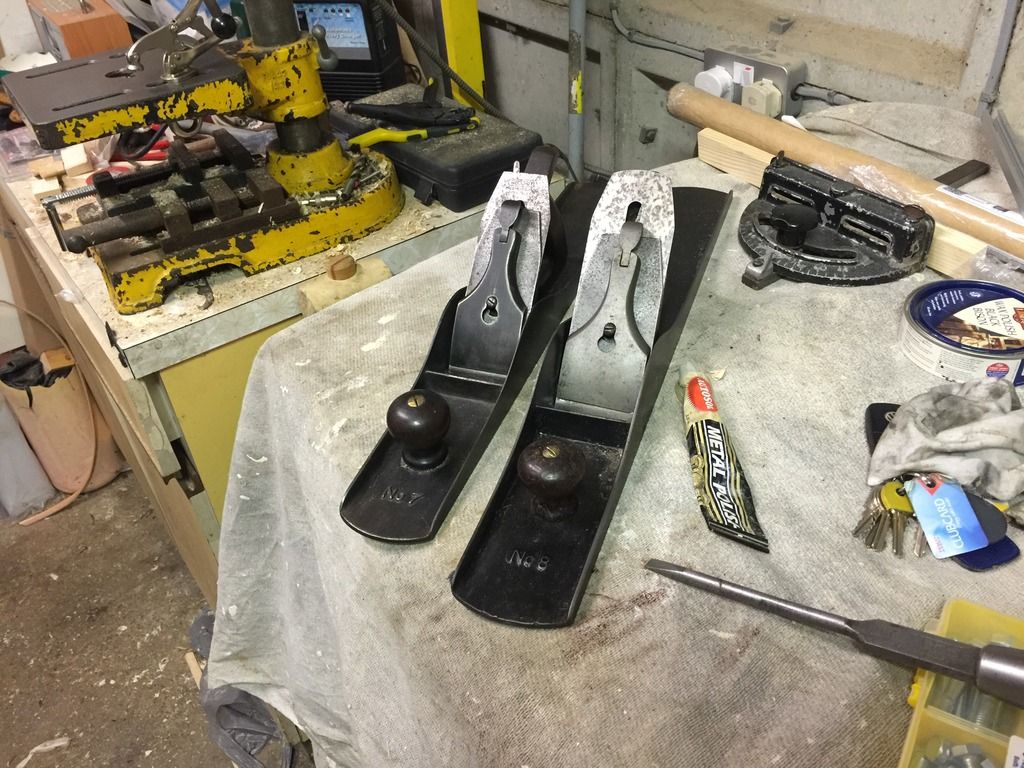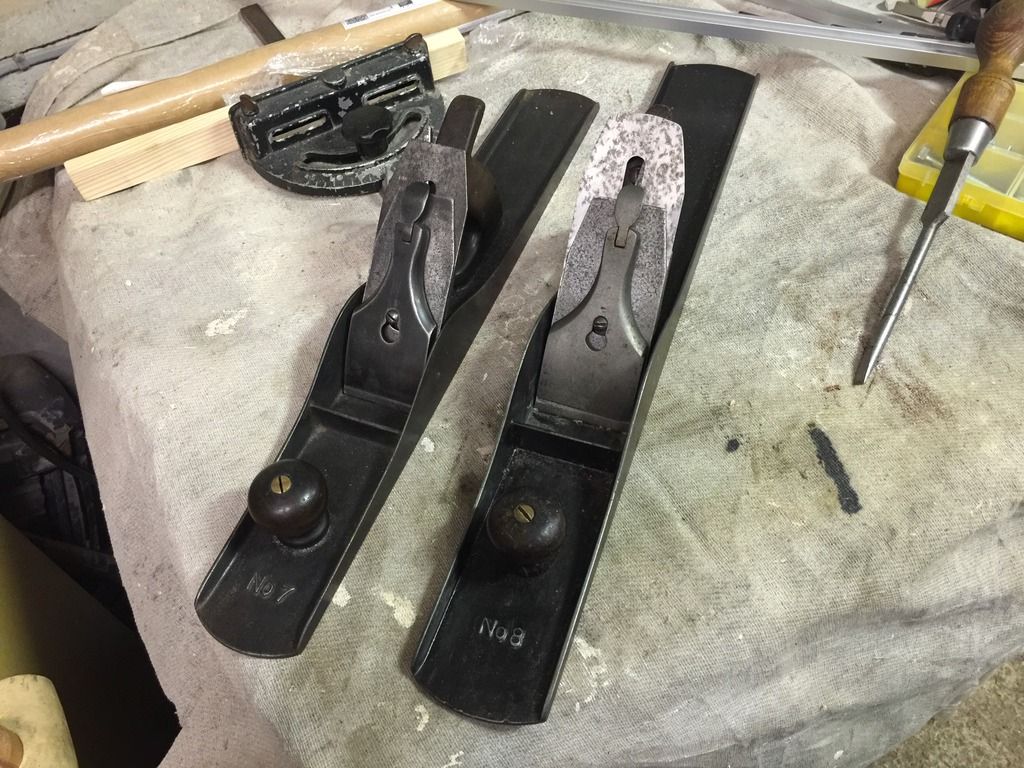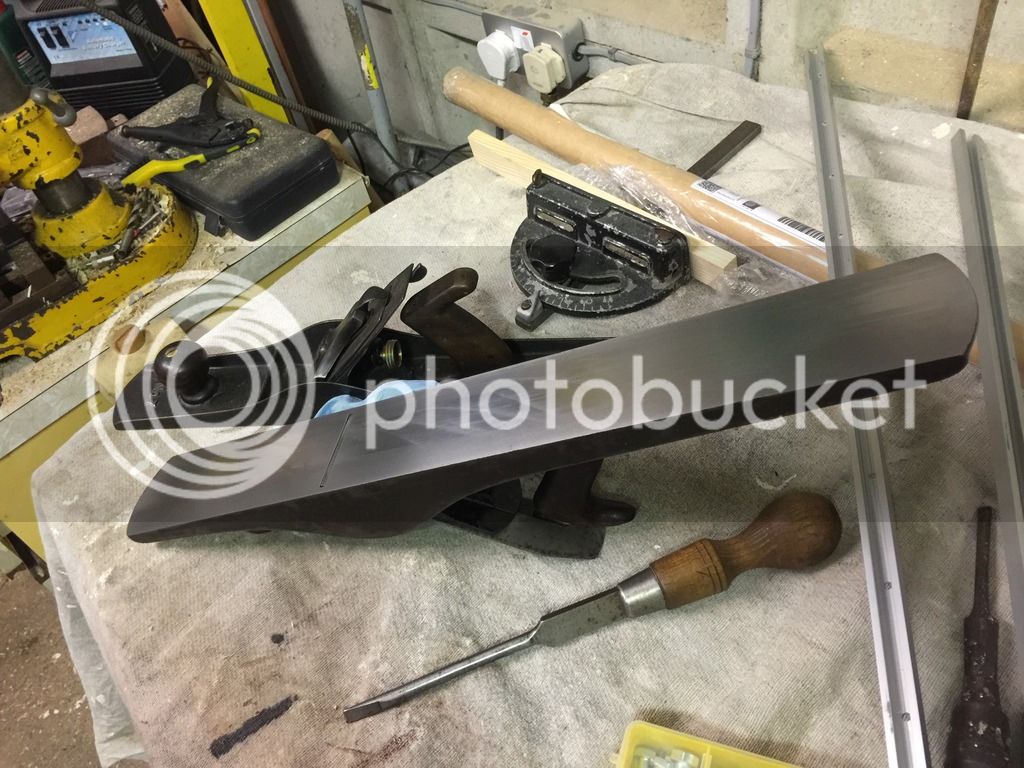That's basically what I was going for BB; old and well looked after as opposed to new and shiny.
Having a No. 7 of the same vintage made things easier I must admit. Without that it would have been difficult to know what to aim for (actually most of my planes are of similar age but the point is the same).
When I pick up and use a 100+ year old tool, entirely aside from the excellent performance, I also get a sense of the times and many craftsmen that the tool has encountered and feel quite privileged to be using it today. I suppose some get the same feeling from a modern LN or Veritas which is totally understandable (perhaps more than my own position in fact) but my own tastes run a bit different. I was having a discussion with a girl that works for me about this sort of thing and we agreed that she was a "new and shiny" sort of person while I preferred "old and patinated" she couldn't figure out why and I'm not sure I can either but there you go!



































